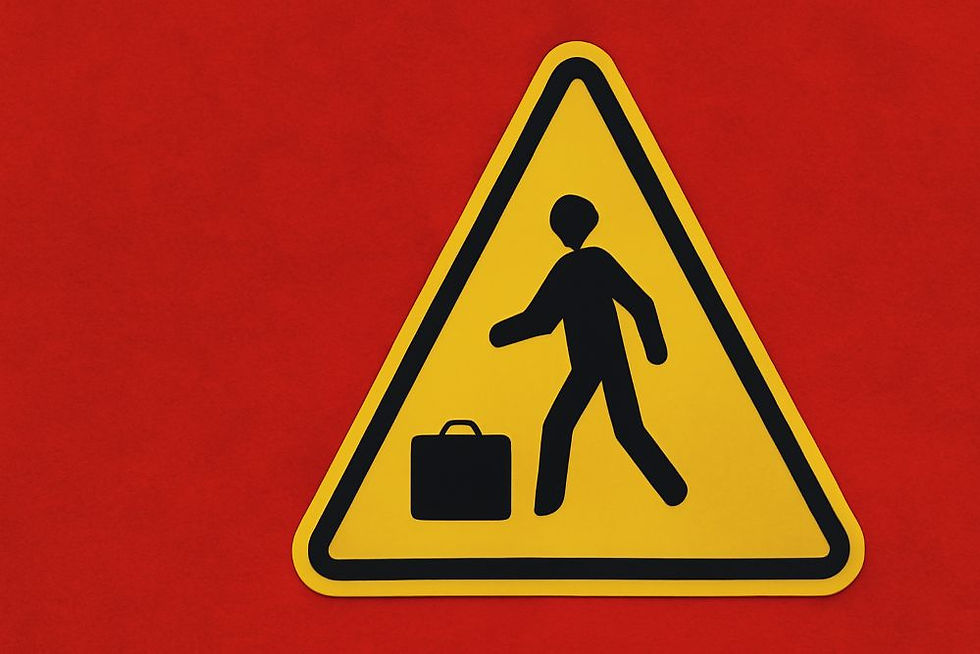US Stagflation Risks Shake Global Markets
- Admin
- Aug 18, 2025
- 4 min read

As concerns about stagflation, a troubling mix of slow economic growth and persistent inflation, grow in the United States, global markets remain on high alert. The U.S. economy, with its significant influence, could have widespread consequences if it weakens, impacting investment portfolios worldwide. A recent survey by BofA Global Research shows that 70% of global investors expect stagflation in the next 12 months, driven by troubling signs such as a weakening U.S. job market, rising core inflation, and unexpected jumps in producer prices.
Despite these warning signs, global stock markets stay near record highs, and bond markets remain surprisingly stable. As one expert observed, "Stagflation is in the mind of the market, but not in the prices." So, what does this mean for investors, and how can they get ready for potential challenges?
Stagflation is a rare and worrisome economic condition that combines slow growth with rising prices, creating significant challenges for policymakers and investors. Unlike typical slowdowns, where decreasing demand helps control inflation, stagflation, most notably seen in the 1970s, resists conventional solutions. Recent U.S. data paints a concerning picture: a weakening labor market, rising core inflation, and unexpected increases in producer prices. Tariffs play a significant role in raising costs for both businesses and consumers, threatening to slow growth while pushing prices higher. JPMorgan’s mid-2025 outlook warns of a "stagflationary slowdown," lowering U.S. GDP growth estimates to 1.3% and projecting a 40% chance of recession.
For the world's largest economy, this is a significant issue, and its effects could influence markets from Tokyo to London. Investors are starting to adjust their positions, but the stability in stock and bond markets shows that many remain optimistic, especially about major U.S. technology companies, which have so far stayed unaffected by the negative outlook.
Persistent inflation erodes the value of fixed-income securities, making longer-dated bonds especially vulnerable as inflation concerns grow. Pension funds and insurance companies managing over $1 trillion in assets are becoming worried about their bond portfolios, according to Paul Eitelman of Russell Investments. A single disappointing U.S. employment report could heighten these concerns, leading to higher yields and lower prices. The effect won't be limited to the U.S.; global bond markets are highly interconnected, with long-term yields in G7 economies moving together. Already, 30-year yields in the U.S., Germany, and Britain are climbing, while shorter-term yields are falling, indicating market uncertainty. If inflation prevents the Federal Reserve from lowering rates in 2025, even short-term bonds may be impacted.
Global equities, including those on Wall Street, are in a fragile state. Since 1990, world stocks have averaged a 15% decline during U.S. stagflation periods, which happen when manufacturing contracts and prices rise sharply. Despite this, the markets remain optimistic, mainly because of strong earnings reports from major tech companies, which investors believe can handle trade disruptions.
Caroline Shaw from Fidelity International remains optimistic about the tech sector but is also preparing for potential downturns by buying put options on the cyclical Russell 2000 small-cap index. This move shows her concern about a possible market decline. Small businesses are already feeling the effects of higher costs from tariffs and falling consumer confidence. As of March 2025, the iShares Russell 2000 ETF is down 7.19% year-to-date. If stagflation occurs, global stocks could face major challenges.
The U.S. dollar, usually seen as a safe haven, is currently facing a major challenge from stagflation. Weak economic growth can cause currencies to lose value, while rising inflation decreases purchasing power globally, according to Nabil Milali of Edmond de Rothschild Asset Management. This year, the euro has gained 12% against the dollar, and both the yen and the pound have also risen. JPMorgan predicts that currencies from emerging markets might do better than the dollar as global growth is expected to slow to 1.3% in 2025. Investors expecting a weaker dollar are looking for opportunities in other currencies, but the risk of currency volatility adds an extra layer of danger.
As investors look for safe havens, gold continues to shine, especially with rising concerns about stagflation. Its recent move past $3,000 per ounce highlights growing demand for gold as a hedge against inflation and economic instability. Additionally, short-term inflation-linked bonds and complex financial instruments like inflation swaps, which increase in value when prices exceed certain thresholds, are becoming more popular among professionals. The energy sector has historically shown resilience during inflationary periods and offers another defensive choice. Investment funds like the Vanguard Energy ETF provide exposure to major companies such as Exxon and Chevron. These assets may act as a buffer if stagflation becomes a significant problem.
The risk of stagflation in the U.S. is a warning for investors worldwide. While markets haven't fully priced in these risks, signs like tariffs, inflation, and slower growth are evident. To stay ahead, consider diversifying into inflation-proof assets such as gold and energy. Also, keep an eye on bond yields and prepare for possible stock market swings. Since the global economy is linked, a setback in the U.S. could have widespread effects. Taking action now can help you better position your portfolio to handle challenges and seize opportunities in this uncertain environment.









Comments